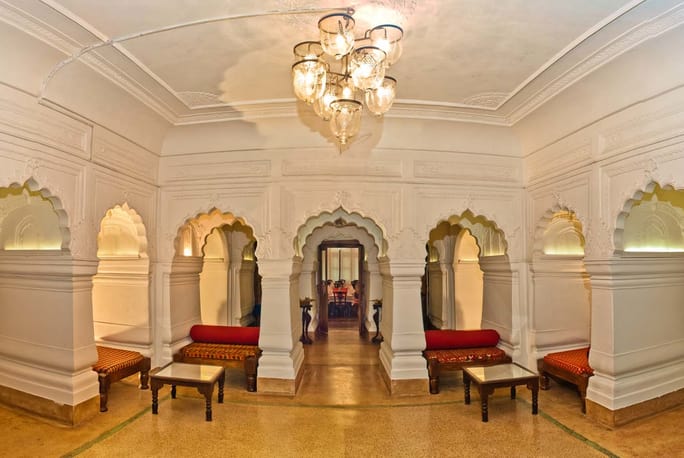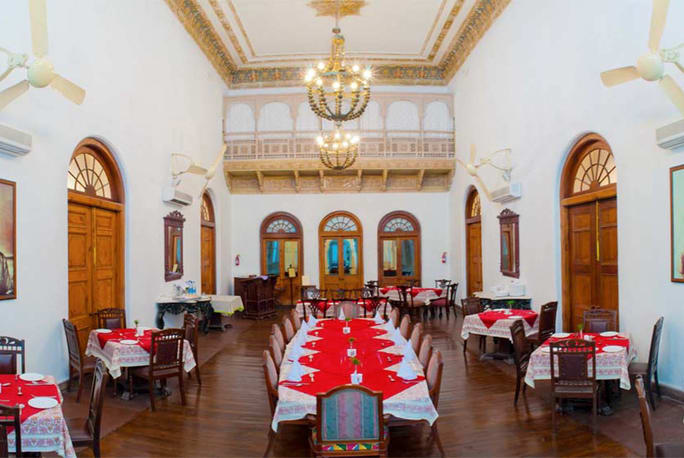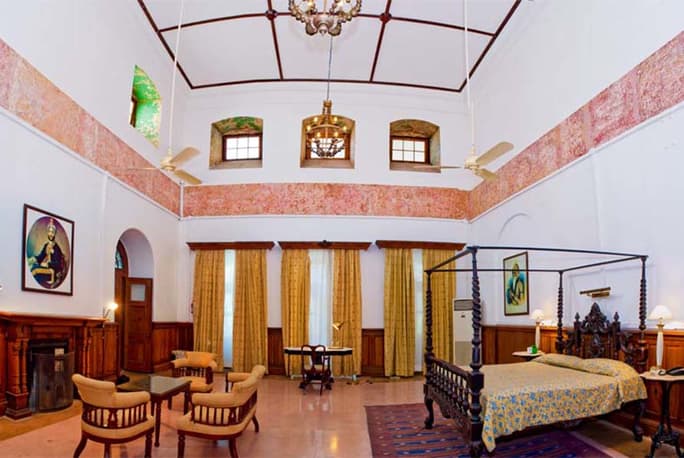Overview
The Baradari Palace may be one of the more modest Palaces of Patiala, but it certainly scores high on passion and dedication that brought it back from obscurity. The Baradari Palace is a white, colonnaded building, centered on a rectangular Sikh-Mughal-style, twelve door pavilion or baradari which gave its name to a splendid garden commissioned by the then ruler Maharaja Rajinder Singh. It was designed in 1876 by Kaur Sahib Ranbir Singh, the younger brother of the Maharaja. Not as ostentatious as the other palaces of Patiala, it is nonetheless significant as a piece of Colonial architecture. Prior to this, the Patiala family had lived in Qila Mubarak, once Asia’s largest residence. This is now a museum full of royal memorabilia, which merits a visit.Maharaja Rajinder Singh of Patiala, who commissioned The Baradari Palace, was a quiet nonconformist. He championed women’s rights, implemented reforms and later defied all taboos to marry an Irishwoman.
He was also known for the ease with which he integrated all cultures. Today the Baradari Palace has come alive and seems to have become an architectural portraiture of the Maharaja: it refuses to conform to a single architecture style, and happily unites Hindustani, Mughal and Colonial trappings.Over the years, the Baradari Palace has gathered more and more history. It housed the Shahi Mehmandari (the state guest house), the Punjabi University – and from 1972 to 2006, the Punjab State Archives. Eventually, when the founder-restorers of Neemrana took over the building, they decided not just to preserve the original period look through careful restoration, but also to revitalize it to suit the requirements of the present day traveller.The earlier rooms on the ground floor with very high ceilings face the garden, whereas the Maharaja lived on the upper floors with his three wives: Sikh, Muslim, and Christian. When they moved to The Baradari Palace, in keeping with the very British tastes of the period, a cricket field, a skating rink and a mono-rail were also built around it.
A sprawling garden-palace in the heart of culturally-rich Patiala evokes an era of art and music generously patronised by the royal family. If the Patiala peg spells quantity – then in the same tradition, The Baradari Palace speaks volumes on hospitality and space! Discover an architectural marvel at the heart of this jewel.The various Neemrana properties, located all over India, offer fresh products available in that region. Our local cuisines with a different palate experience are for gourmets who travel with their taste buds – and also enjoy eating with their eyes.At The Baradari Palace broadly we serve North Indian cuisine with a few Chinese and Continental dishes, to suit a range of tastes and palates. Relish mouth watering delicacies – Patiala style.The meats are procured on a regular basis. We prefer not to deep freeze our foods for long durations or for non-seasonal offering.Should you desire to taste a special dish or have a particular preference, you can certainly make a request at the previous meal, and the chefs will try and please you.
Many a lingering courtship has hurried its decision to tie the knot at the romantic Baradari Palace. In beautiful natural and historical sites the cosmos naturally connives to bless you. The private setting of this spacious royal home makes a magical setting for very intimate weddings. Besides, you don’t have to be the impresario of your own wedding. Once you choose a Patiala wedding you only decide how much or little you want to do: just let the mansion flaunt its charm or have fireworks to celebrate with the cosmos and stringed roses or tuberoses fill the air with fragrance, netting the sky in floral lace.
Accommodation
Raja Baba Ala Singh - This suite with a garden-view verandah is situated on the ground floor level. A spacious room with high ceilings and a fireplace, it is done up in tasteful beige interiors.
Raja Sardul Singh - This suite with a garden-view verandah is situated on the ground floor level. A spacious room with high ceilings and an unusual chandelier, it is done up in lively, yellow interiors.
Raja Amar Singh - This suite with a garden-view verandah is situated on the ground floor level. A spacious room with high ceilings, it has a fireplace and two single beds.
Maharaja Sahib Singh - This suite with a garden-view verandah is situated on the ground floor level. A spacious room with high ceilings, it has a fireplace and a double bed.
Maharani Mohinder Kaur - This room is situated on the ground floor level and has access to an open sitting area with verandahs. The interiors are done up in tasteful hues of blue and multi-colours.
Maharani Bakhtawar Kaur - This room is situated on the ground floor level and has access to an open sitting area with verandahs. The interiors are done up in hues of red.
Maharani Chakerian Wale - This suite is situated on the first floor level and has access to a terrace. The main room and the ante room are done up in vibrant hues of red.
Rani Fateh Kaur - This room is situated on the first floor level and has access to a garden that overlooks the Baradari Gardens.
Maharaja Karam Singh - This room is situated on the first floor level with access to a verandah that overlooks the Baradari Gardens. It is done up in vibrant shades of red and purple.
Bibi Rajkumari Sahib Kaur - This room is named after Bibi Rajkumari Sahib Kaur who was a warrior and a leader of men. She was the elder sister of Raja Sahib Singh of Patiala.
Maharaja Narinder Singh - This room is named after Maharaja Narinder Singh, the son of Maharaja Karam Singh who aided the British with supplies and carriages during the first Anglo- Sikh war.
Maharajkumari Surinder Kaur - Named after the daughter of Maharani Bakhtawar Kaur, this is a small room with a tree-view situated on the first floor level.
Maharaja Yadavindra Singh - This room is named after Maharaja Yadavindra Singh who was to be the first Maharaja, agreeing to the incorporation of Patiala into the newly independent India.
Maharaja Bhupinder Singh - This large suite is situated on the second floor level and has access to 2 terraces. It is done up in soothing earthy colours. A portrait of Maharaja Bhupinder Singh adorns the walls.
Maharaja Rajinder Singh - This suite is named after Maharaja Rajinder Singh who was described as “the first reigning Prince to blend the elements of the English gentleman and Indian potentate”.
Maharaja Mohinder Singh - A spacious suite with access to 2 terraces, it is situated on the second floor level of the Palace. It is done up in vibrant hues of orange and red.
Kaursahib Ranbir Singh - This room is situated on the second floor level and has access to a circular verandah over the garden axis. The interiors of the room are done up in soothing shades of beige and blue.
Hotel & Room facilities
- 24-hour front desk
- Backup generator
- Breakfast services
- Laundry services
- Free Wi-Fi
- Luggage storage
- Doctor on call
- Parking(free)
- Restaurant
- Travel counter
- Attached Bathroom
- Bathrobes
- H/C running water
- Housekeeping
- Mini Bar
- Swimming pool
- Premium bedding
- Reading lamps
- Room heater
- Daily newspaper
- Television-Room
- Wakeup-calls
- Coffee/Tea maker



